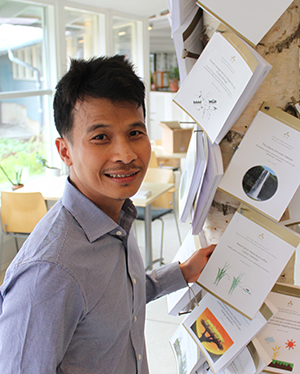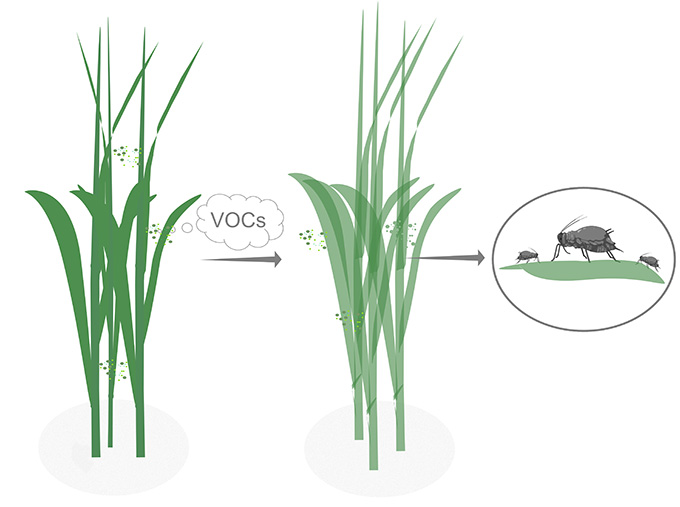Cultivar mixtures may reduce aphid problems in the future

Aphids are causing problems for agriculture worldwide and there is a great need to find alternatives to chemical pesticides. Sokha Kheam's thesis shows that it may be possible to reduce infestations by mixing different cultivars of a crop. He has studied the complex world of plant-plant communication between different cultivars that affects aphid behaviour and growth development.
Aphids cause damage to plants through their sucking behaviour and they also transmit diseases. The most common way to deal with them on farms is to spray insecticides, which can harm both the environment and people.
One strategy for more sustainable agriculture is to increase diversity in the field by mixing different cultivars of the same crop. Sokha Kheam has been studying cultivar mixtures of barley and soya beans.
In one experiment, he placed barley plants in cages and then exposed them to volatiles from other barley varieties. Volatiles are a way for plants to communicate with each other. It is important to know what your neighbours are doing. For example, how they are growing or if they are being attacked.
“The experiment showed that the release of volatiles from one plant caused changes in the volatiles released by the receiving plant. And this in turn affected the behaviour of the aphids”, says Sokha Kheam.

One of these substances in particular had a strong deterrent effect on the aphids. This is knowledge that can be used in the development of new methods of plant protection. In this experiment, the varieties also adapted their growth to each other despite growing at different speeds at the beginning, which could also be due to the communication between them.
With a certain variety mix, the aphids spent less time feeding. They also grew less well and took longer to develop into adult aphids that could reproduce.
“Our hypothesis is that the barley plant activated its defences and was therefore not as good for the aphids when exposed to signals of a certain variety”, says Sokha Kheam.
The experiments were quite challenging.
"Weighing 24-hour-old aphids required a lot of patience and practice. I took the tiny nymphs from the plant with a small brush, weighed it, and put it back on the plant. After five days, I weighed them again," Sokha Kheam explains.
In Cambodia, he conducted a field experiment with soya beans. Increasing the mix of soya bean varieties attracted natural enemies of aphids at certain plant stages. But it did not lead to increased yields or less disease.
- The hope was, of course, that the biological control provided by the natural enemies would reduce damage and thus improve yields. This shows that we need more knowledge to be able to use it practically in agriculture,’ says Sokha Kheam.
Kontakt
Sokha.Kheam@slu.se
Avhandling

Illustration: Sokha Kheam